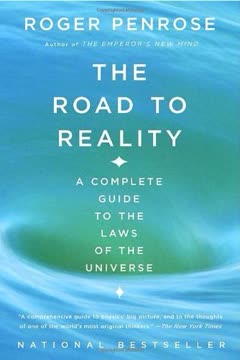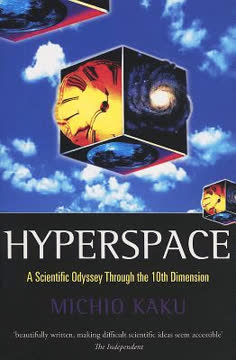Key Takeaways
1. Our universe may be one of many in a vast multiverse
If there was any doubt at the turn of the twentieth century, by the turn of the twenty-first, it was a foregone conclusion: when it comes to revealing the true nature of reality, common experience is deceptive.
The multiverse concept challenges our traditional view of a single universe. Various scientific developments, including string theory, inflationary cosmology, and quantum mechanics, suggest the possibility of multiple universes existing simultaneously. These parallel worlds may have different physical laws, constants, or histories.
Types of multiverses proposed by scientists include:
- The Quilted Multiverse: Infinite space contains infinite copies of our observable universe
- The Inflationary Multiverse: Eternal inflation creates bubble universes
- The Brane Multiverse: Our universe exists on a membrane in higher-dimensional space
- The Quantum Multiverse: Each quantum possibility spawns a new universe
These theories aim to explain puzzling aspects of our universe, such as its apparent fine-tuning for life and the nature of quantum reality.
2. String theory suggests extra dimensions and parallel worlds
String theory challenges this picture by suggesting that the particles are not dots. Instead, the theory proposes that they're tiny, stringlike, vibrating filaments.
String theory proposes that the fundamental constituents of the universe are tiny vibrating strings, not point particles. This revolutionary idea requires the existence of extra spatial dimensions beyond the three we observe. These extra dimensions, compactified into complex shapes, could explain the properties of particles and forces we observe.
Key implications of string theory:
- Unification of all fundamental forces, including gravity
- Possible explanation for particle properties and constants
- Multiple ways to configure extra dimensions, leading to a "landscape" of possible universes
- Potential for parallel "brane worlds" existing in higher dimensions
While string theory remains unproven, it offers a compelling framework for understanding the universe at its most fundamental level and provides a natural path to exploring the concept of parallel universes.
3. Quantum mechanics implies infinite parallel realities
There'll be someone who looks just like me, has all my memories, and emphatically claims to be me who sees heads, and another being, equally convinced that he's me, who sees tails.
The Many Worlds interpretation of quantum mechanics, proposed by Hugh Everett III, suggests that every possible outcome of a quantum event occurs, each in its own separate universe. This leads to an ever-branching reality, where countless versions of ourselves exist across infinite parallel worlds.
Key aspects of the Many Worlds interpretation:
- Eliminates the need for wave function collapse in quantum measurements
- Preserves determinism at the cost of multiplying realities
- Challenges our notions of probability and personal identity
- Raises philosophical questions about the nature of reality and consciousness
While controversial, this interpretation offers a way to reconcile quantum mechanics with our everyday experience of a definite reality, albeit at the cost of an unimaginably vast multiverse.
4. The holographic principle proposes reality as a projection
Reality, that is, may be akin to a hologram. Or, really, a holographic movie.
The holographic principle suggests that the information contained in a volume of space can be described by a theory that operates on the boundary of that space. This radical idea emerged from studies of black hole entropy and has profound implications for our understanding of reality.
Key implications of the holographic principle:
- The universe may be a projection of information stored on a distant two-dimensional surface
- Challenges our intuitive notions of dimensionality and locality
- Provides a potential framework for reconciling quantum mechanics and gravity
- Suggests a deep connection between information, entropy, and spacetime
This principle, while still speculative, offers a powerful new perspective on the nature of reality and the fundamental structure of the universe.
5. Black holes challenge our understanding of information and entropy
When quantum mechanics is brought to bear on the concept of a field, the result is quantum field theory, which is characterized by two essential new features.
Black holes serve as cosmic laboratories for testing our most fundamental theories. The study of black holes has led to profound insights into the nature of information, entropy, and the interplay between quantum mechanics and gravity.
Key revelations from black hole physics:
- Black holes have entropy proportional to their surface area, not volume
- Hawking radiation suggests that black holes slowly evaporate
- The black hole information paradox challenges our understanding of information conservation
- Black hole thermodynamics provides clues about the nature of spacetime
These discoveries have far-reaching implications, suggesting deep connections between gravity, thermodynamics, and information theory that may revolutionize our understanding of the universe.
6. The anthropic principle explains fine-tuned universe properties
By invoking a multiverse, science could weaken the impetus to clarify particular mysteries, even though some of those mysteries might be ripe for standard, nonmultiverse explanations.
The anthropic principle suggests that the observed properties of our universe are compatible with the existence of intelligent observers (us) because if they weren't, we wouldn't be here to observe them. In a multiverse context, this principle can explain seemingly fine-tuned constants and laws without resorting to design or purpose.
Key aspects of anthropic reasoning:
- Weak anthropic principle: Our observations are limited by conditions necessary for our existence
- Strong anthropic principle: The universe must have properties allowing life to develop
- Application to cosmological constants, such as dark energy density
- Controversial status as an explanatory tool in science
While the anthropic principle provides a potential explanation for our universe's apparent fine-tuning, it remains a subject of debate among scientists and philosophers.
7. Multiverses raise questions about scientific testability and prediction
Is it scientifically justifiable to speak of a multiverse, an approach that invokes realms inaccessible not just in practice but, in many cases, even in principle?
The multiverse hypothesis challenges traditional notions of scientific methodology. Critics argue that theories involving parallel universes are untestable and therefore unscientific, while proponents contend that indirect evidence and theoretical consistency can support multiverse models.
Key issues in multiverse science:
- Testability and falsifiability of multiverse theories
- Indirect evidence through cosmological observations
- Statistical predictions in a multiverse context
- Philosophical implications for the nature of scientific explanation
The debate over multiverse theories highlights the tension between explanatory power and empirical testability in modern physics, pushing the boundaries of what we consider science.
8. Inflationary theory supports the existence of bubble universes
If inflation is correct, as the most refined astronomical observations suggest, the burst that created our region of space may not have been unique.
Inflationary cosmology proposes that the early universe underwent a period of exponential expansion. This theory not only solves several problems in standard Big Bang cosmology but also naturally leads to the concept of eternal inflation and bubble universes.
Key features of inflationary theory:
- Resolves the horizon, flatness, and magnetic monopole problems
- Predicts cosmic microwave background fluctuations
- Suggests our universe is one of many bubble universes in an eternally inflating multiverse
- Provides a mechanism for generating diverse universes with different properties
Inflationary theory has gained strong observational support and offers a compelling framework for understanding the origin and structure of our universe within a larger multiverse.
9. Brane worlds offer a new perspective on cosmic structure
If we are on such a gliding brane, and there are other branes nearby, what would happen if we slammed into one of them?
Brane world scenarios, emerging from string theory, propose that our universe exists as a three-dimensional membrane (brane) floating in a higher-dimensional space. This concept offers new ways to think about fundamental physics and cosmology.
Key implications of brane world models:
- Explain the weakness of gravity compared to other forces
- Provide new mechanisms for cosmic inflation and dark energy
- Suggest the possibility of colliding universes
- Offer potential experimental signatures in particle physics and cosmology
Brane world theories represent a radical reimagining of cosmic structure, combining insights from string theory and cosmology to explore the nature of reality beyond our familiar three-dimensional space.
Last updated:
FAQ
What's The Hidden Reality about?
- Exploration of Parallel Universes: Brian Greene's book delves into the concept of parallel universes, suggesting that our universe may not be the only one. It explores various scientific theories that propose the existence of multiple universes, each with different properties and laws.
- Scientific Theories and Insights: The book discusses theories such as the inflationary multiverse, string theory, and the brane multiverse, providing a comprehensive overview of modern physics. Greene structures the narrative around nine variations of the multiverse theme.
- Accessible to All Readers: Greene aims to make complex scientific ideas accessible to a general audience, using metaphors and analogies. He encourages readers to embrace unconventional realms of reality, making the book both informative and engaging.
Why should I read The Hidden Reality?
- Broadening Understanding of Reality: The book challenges conventional perceptions of the universe and reality, encouraging readers to think beyond the observable. It presents a compelling case for the existence of multiple universes.
- Engaging Writing Style: Greene's ability to explain complex scientific concepts in an engaging and relatable manner makes the book enjoyable. His use of historical anecdotes and metaphors helps demystify advanced topics in physics.
- Stimulating Curiosity: By exploring the boundaries of reality, the book ignites curiosity about the universe and our place within it. It invites readers to ponder profound questions about existence, knowledge, and the nature of the cosmos.
What are the key takeaways of The Hidden Reality?
- Existence of Multiple Universes: One of the primary takeaways is the idea that our universe may be just one of many, each with its own unique properties. Greene presents various scientific frameworks that support this notion.
- Interconnectedness of Physics: The book illustrates how different areas of physics, including quantum mechanics and general relativity, converge on the idea of parallel universes. This interconnectedness highlights the complexity and richness of the cosmos.
- Philosophical Implications: Greene discusses the philosophical implications of a multiverse, including questions about identity, reality, and the nature of existence. The exploration of these themes encourages readers to reflect on their understanding of the universe.
What are the best quotes from The Hidden Reality and what do they mean?
- "Common experience is deceptive.": This quote emphasizes that our everyday perceptions may not accurately reflect the complexities of the universe. Greene suggests that deeper scientific inquiry is necessary to uncover the true nature of reality.
- "Realms that challenge convention.": Greene highlights the importance of exploring unconventional ideas in science. The existence of parallel universes challenges traditional notions of reality and encourages open-mindedness in scientific exploration.
- "Replicated in an infinite number.": This quote encapsulates the essence of the multiverse concept. It suggests that every possible outcome exists in some universe, raising intriguing questions about identity and existence.
What is the inflationary multiverse as described in The Hidden Reality?
- Rapid Expansion of Space: The inflationary multiverse theory posits that the universe underwent a rapid expansion shortly after the big bang. This expansion creates numerous bubble universes, each with its own distinct properties.
- Quantum Fluctuations: Quantum fluctuations during the inflationary period lead to variations in the energy density of different regions. These fluctuations result in the formation of bubble universes that can have different physical laws and constants.
- Eternal Process: The inflationary process is thought to be eternal, meaning that new bubble universes continue to form indefinitely. This creates a vast multiverse where each bubble universe can evolve independently.
How does string theory relate to the concept of parallel universes in The Hidden Reality?
- Fundamental Building Blocks: String theory proposes that the fundamental constituents of matter are not point particles but rather tiny, vibrating strings. The different vibrational patterns of these strings correspond to different particles and their properties.
- Extra Dimensions: String theory requires additional spatial dimensions beyond the familiar three. These extra dimensions can lead to various configurations of the universe, potentially resulting in multiple parallel universes with different physical laws.
- Unification of Forces: String theory aims to unify all fundamental forces of nature, including gravity, within a single framework. This unification supports the idea of a multiverse by suggesting that different physical laws can emerge from different configurations of strings and dimensions.
What is the brane multiverse described in The Hidden Reality?
- Higher-Dimensional Objects: The brane multiverse concept arises from string theory, where our universe is envisioned as a three-dimensional brane embedded in a higher-dimensional space. Other branes can exist parallel to ours, each representing a separate universe.
- Gravity's Unique Role: Unlike other forces, gravity can leak off the brane, allowing interactions between different branes. This means that while matter and energy are confined to their respective branes, gravitational effects can connect them.
- Implications for Reality: The existence of multiple branes suggests that there are many parallel universes, each with its own unique properties. This adds another layer to the multiverse concept, expanding the possibilities of what exists beyond our observable universe.
What is the Cyclic Multiverse as described in The Hidden Reality?
- Endless Cycles: The Cyclic Multiverse posits that the universe undergoes infinite cycles of expansion and contraction. Each cycle begins with a big bang and ends with a big crunch, leading to a new cycle.
- Gravitational Waves Evidence: Greene discusses how evidence of gravitational waves from the early universe could support or challenge this model. The presence or absence of such waves could indicate whether the universe follows a cyclic pattern.
- Skepticism in the Physics Community: While the Cyclic Multiverse is a compelling idea, it is met with skepticism among physicists. Greene notes that observations and data will ultimately determine its validity.
What is the Quantum Multiverse and how does it differ from other multiverse theories?
- Many Worlds Interpretation: The Quantum Multiverse emerges from the Many Worlds interpretation of quantum mechanics, which posits that all possible outcomes of quantum events occur in separate, branching universes. This contrasts with other multiverse theories that may not involve such branching.
- Deterministic Evolution: Unlike the probabilistic nature of traditional quantum mechanics, the Quantum Multiverse suggests a deterministic evolution of probability waves. Each possible outcome is realized in its own universe, eliminating the need for wave collapse.
- Implications for Reality: Greene discusses how the Quantum Multiverse challenges our understanding of reality and existence. It raises questions about identity and consciousness, as each version of "you" exists in different outcomes.
How does The Hidden Reality address the concept of black holes?
- Black Holes and Entropy: Greene discusses the relationship between black holes and entropy, explaining that black holes have entropy proportional to the area of their event horizon. This connection highlights the deep relationship between thermodynamics and gravitational physics.
- Information Paradox: The book explores the information paradox associated with black holes, questioning how information is preserved when matter falls into a black hole. Greene presents various theories that attempt to reconcile this paradox with established physical laws.
- Holographic Principle: Greene introduces the holographic principle, which posits that all the information contained within a volume of space can be represented on its boundary. This principle has profound implications for our understanding of black holes and the nature of reality.
What is the Holographic Multiverse and its significance?
- Information Storage: The Holographic Multiverse suggests that all the information in a three-dimensional space can be encoded on a two-dimensional surface. This challenges traditional notions of dimensionality and has implications for theories of quantum gravity.
- Connection to Black Holes: Greene explains that the holographic principle emerged from studies of black holes, where the entropy of a black hole is proportional to its surface area. This connection provides a framework for understanding how information is stored in the universe.
- Implications for Reality: The Holographic Multiverse raises questions about the nature of reality itself, suggesting that our three-dimensional experience may be a projection of more fundamental two-dimensional processes. This idea has profound philosophical implications for our understanding of existence.
Review Summary
The Hidden Reality explores theories of parallel universes and multiverses, discussing concepts like string theory, quantum mechanics, and inflationary cosmology. Reviews praise Greene's clear explanations of complex physics for laypeople, though some found parts difficult to follow. Many readers appreciated the book's thought-provoking ideas about reality and the cosmos, while a few felt it was too speculative or repetitive. Overall, reviewers found it an engaging, if challenging, look at cutting-edge physics theories about multiple universes.
Similar Books








Download PDF
Download EPUB
.epub digital book format is ideal for reading ebooks on phones, tablets, and e-readers.







